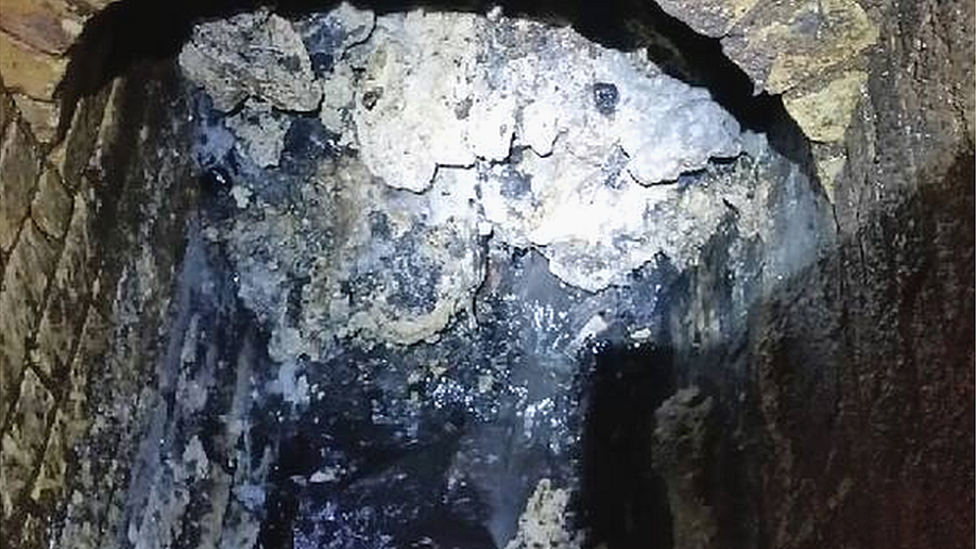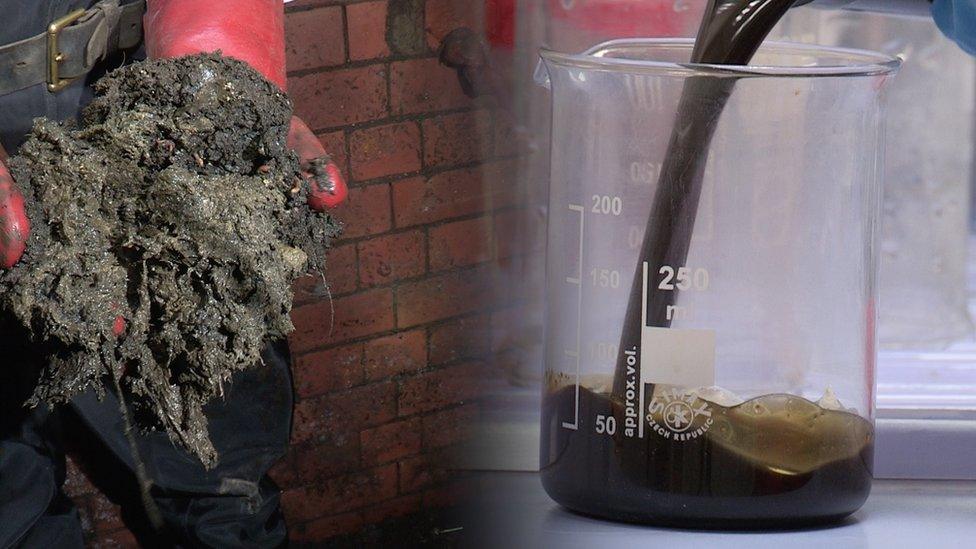'Monster' London fatberg: The smell and other questions
- Published
The fatberg was filmed by Thames Water engineers who are trying to remove the blockage
Sewer workers are tackling an enormous mass of congealed fat, wet wipes, nappies, oil and condoms in a London tunnel.
It is thought it will take three weeks to clear the 250-metre long fatberg weighing 130 tonnes underneath Whitechapel.
Thames Water says fatbergs form when people put things they shouldn't down sinks and toilets.
Here are the answers to some of the things you have asked about them.

Why was the problem not spotted before it got to this size?
"Fatbergs, even ones the size of this, can appear incredibly quickly, due to a number of factors such as the change in temperature," said Alex Saunders, sewer network manager at Thames Water.
"They can also cause a number of problems within the network, and cause issues such as flooding.
"Thankfully, this one was found on a routine inspection of the sewers, and we got to work removing it before it caused any flooding."

What does it smell like?
"A fatberg smells like rotting meat mixed with the odour of a smelly toilet," said Mr Saunders.

Can any of the fatberg be recycled?
"Yes it can. First the fatberg must be broken up by eight workers with high-pressure hoses.
Then the pieces will go to a recycling plant in Stratford where it will be transformed into renewable energy."
This video explains how it is done.
How one company is turning sewer fat into biodiesel

How much does it cost to unblock?
"It's difficult to say per fatberg as we don't know the final cost until after it's been removed," Mr Saunders said.
"However, we spend £1m a month removing fatbergs from across our network."

How should people dispose of fat/cooking oil to avoid this situation?
Thames Water said leftover cooking fat and oil should be allowed to cool before pouring it into a container.
Margarine tubs, plastic pots and jam jars make handy containers, which you can then put in the bin, the company said.
More advice can be found in the Thames Water bin it don't block it campaign., external
What causes fatbergs?
- Published12 September 2017

- Published28 June 2017
